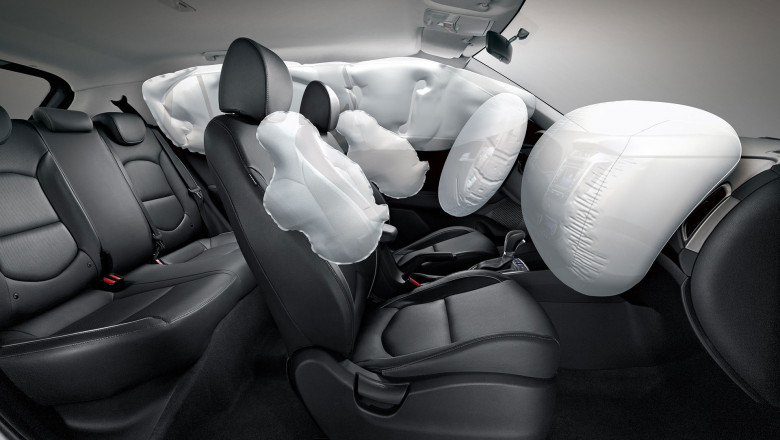views
The automotive airbag market is heavily influenced by a complex framework of regulations and safety standards that vary across regions but are ultimately driving the development of more advanced and widely adopted airbag systems. These regulations are not only ensuring that airbags are deployed in a way that minimizes injury but also encouraging innovation as manufacturers seek to meet increasingly stringent compliance requirements. As consumer expectations around safety continue to rise, global standards are shaping both the design and deployment of airbag systems, making them more effective in saving lives.
1. Regulatory Landscape Across Regions
Regulatory frameworks for airbags are diverse, with different standards set by organizations like the National Highway Traffic Safety Administration (NHTSA) in the U.S., the European Union’s European New Car Assessment Programme (Euro NCAP), and Japan’s Japan New Car Assessment Program (JNCAP). These regulatory bodies establish the minimum safety standards for vehicle manufacturers, specifying when and how airbags must be deployed, their size, and the types of airbags required in passenger vehicles.
In the U.S., airbags have been mandatory in all passenger vehicles since the early 1990s, following the implementation of regulations by NHTSA. The regulations, known as FMVSS 208, set requirements for frontal airbags, and more recently, side-impact airbags, knee airbags, and curtain airbags for enhanced protection in rollover accidents. Euro NCAP, which sets the bar for vehicle safety in Europe, has increasingly emphasized the need for more comprehensive airbag systems as part of their overall vehicle safety scoring system. For instance, vehicles that achieve a 5-star Euro NCAP rating typically feature advanced airbag systems, including those designed to protect both front and rear passengers in side-impact collisions.
Similarly, Japan's JNCAP has made airbags mandatory in all new vehicles, ensuring that airbag systems are integrated into vehicle designs across various markets. These regulations are constantly evolving to reflect emerging safety research, ensuring that airbag systems remain relevant and effective in improving occupant protection.
2. Emerging Markets and Increasing Compliance
The global shift toward stricter safety standards is not limited to developed markets. Emerging regions like China, India, and Brazil are following in the footsteps of developed markets by implementing their own regulatory frameworks for airbags. China, for example, has introduced its version of crash tests and safety assessments through the China New Car Assessment Program (C-NCAP), which has led to the mandating of front airbags in all new vehicles. India, too, has begun to require front airbags for all new passenger vehicles and has plans to expand these requirements to side airbags as well.
This global trend toward stronger regulations is encouraging automakers to invest in the development and production of airbag systems that not only comply with safety mandates but also enhance their appeal in emerging markets. Manufacturers are therefore working to create cost-effective solutions that meet international safety standards without raising vehicle prices beyond the reach of middle-class consumers in these regions.
3. Technological Innovation Driven by Compliance
Regulatory compliance has spurred significant technological innovations in airbag systems, resulting in the development of more sophisticated and efficient systems that offer greater occupant protection. For example, modern airbag systems are now designed to deploy based on a variety of factors, such as crash severity, occupant weight, and seat position, made possible through the integration of advanced sensors and AI. These developments have become essential to meeting evolving regulatory requirements, which increasingly emphasize the need for adaptive airbag systems that minimize injury risks, even in lower-speed accidents.
In addition, regulations are pushing manufacturers to expand the range of airbags used in vehicles. Side-impact airbags, curtain airbags, knee airbags, and even pedestrian airbags have become more common due to regulatory pressures. The deployment of airbags that are tailored to specific accident scenarios, such as side collisions or rollovers, ensures that manufacturers comply with increasingly specific safety standards.
The rise of autonomous vehicles (AVs) is also prompting the industry to rethink airbag designs to accommodate new seating arrangements and driving paradigms. In AVs, where passengers may not be sitting in traditional orientations, airbag systems will need to be flexible and capable of providing protection in non-traditional crash situations. This requirement is driving significant investments into the research and development of new airbag technologies.
4. Global Harmonization of Safety Standards
A key trend that is emerging in the automotive airbag market is the move toward the harmonization of global safety standards. As vehicle manufacturers operate in multiple countries, the need to streamline regulatory requirements is growing. Organizations such as the United Nations Economic Commission for Europe (UNECE) have been working to create standardized regulations across regions, enabling manufacturers to meet one set of global safety standards instead of navigating complex and sometimes conflicting regional requirements.
This global alignment could lead to more uniform airbag designs and manufacturing processes, reducing costs for automakers while improving safety outcomes worldwide. However, it also presents challenges, as manufacturers must ensure that their airbag systems meet local road conditions, crash scenarios, and cultural expectations.
Conclusion
The automotive airbag market is deeply influenced by the evolving landscape of global safety regulations and compliance requirements. From the introduction of front airbags in the 1990s to the adoption of multi-stage and side airbags in modern vehicles, regulations have continually driven innovation. As emerging markets adopt stricter safety standards and as vehicle technologies evolve, the demand for more sophisticated airbag systems will continue to rise. This will require manufacturers to navigate a complex regulatory environment, but also create opportunities for technological advancements that can further enhance vehicle safety. With global standards becoming more harmonized, the automotive airbag market is entering a new phase of development that promises greater safety, innovation, and accessibility.






















Comments
0 comment